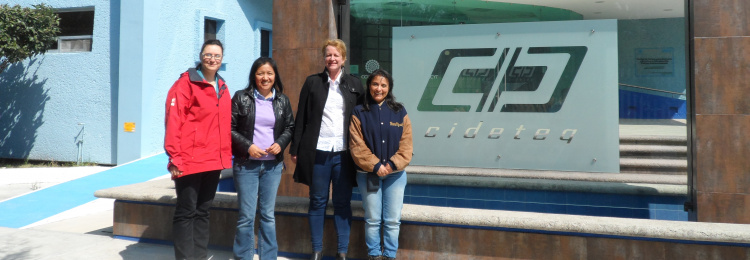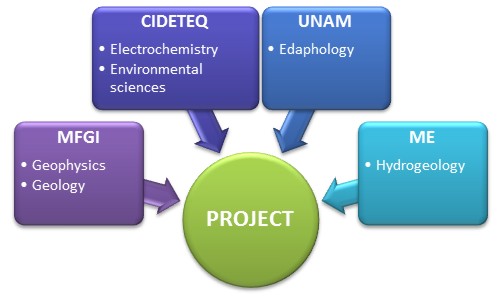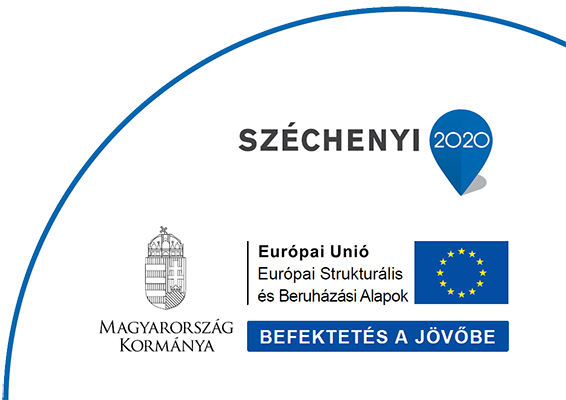
In the frames of the Hungarian-Mexican bilateral project an integrated methodology has been worked out that last from the initial diagnostic of the HC contaminated soil till its remediation. With the cooperation of three scientific disciplines: geology-geophysics, hydrogeology and electrochemistry a new methodology has been developed that gives possibilities to in- situ, economical and controlled remediation of polluted soils. The project financed by the Consejo Nacional de Ciencia y Tecnología de los Estados Unidos Mexicanos (CONACyT) and the Hungarian-Mexican Bilateral Cooperation project TÉT_12_MX-1-2013-0010.
Project leaders: Zsuzsanna Plank (MFGI) és Erika Bustos (CIDETEQ)
Priect duration: 01/09/2014-31/08/2016
Project partners:
- Geological and Geophysical Institute of Hungary (MFGI)
- Department of Hidrogeology and Engineering Geology of the University of Miskolc
- Centro de Investigación y Desarrollo Tecnológico en Electroquímica (CIDETEQ)
- Autonomous University of Mexico (UNAM)

The purpose of the research activity was to create the scientific base of applying non-invasive geoelectrical methods in characterization of hydrocarbon soil contamination. To achieve this goal different scale of basic and applied research activities have been executed. Theoretical 2D geoelectrical models were calculated in order to define the most suitable electrode arrays and other survey parameters for investigation of polluted soils. The aim of the applied research was to examine the effect of hydrocarbon contamination on the electrical resistivity measured by surface geophysical methods in order to develop a suitable on- site methodology for non-invasive diagnostic and monitoring purposes. The applied research activities included field tests in two pilot areas.The aim of the innovation activity was to develop and test a cost and time effective technology for on-site removal of hydrocarbon from polluted soils. In general, contaminated soil treatments included physical, chemical, thermal and biological techniques, offer solutions for most pollutants.
The most significant scientific publications on the project results are:
- ERIKA BUSTOS, MARIBEL PEREZ CORONA, JOSÉ ALBERTO GARCIA, GABOR TALLER, DOROTTYA POLGAR, ZSUZSANNA PLANK: The Cone Penetration Test and 2D Imaging Resistivity as Tools to Simulate the Distribution of Hydrocarbon in Soil, Physics and Chemistry of the Earth, Parts, A/B/C Volume 91, February 2016, Pages 87–92
- MARIBEL PÉREZ-CORONA, ZSUZSANNA PLANK AND ERIKA BUSTOS (2016). The Electrokinetic Treatment of Polluted Soil by Hydrocarbon: From Laboratory to Field, Soil Contamination - Current Consequences and Further Solutions, Dr. Marcelo Larramendy (Ed.), InTech, DOI: 10.5772/64631.
In the frames of the project's knowledge transfer activities the mexican researchers performed work shops in three Hungarian universities on the latest results of soil remediation. The PhD students of the participants were hosted and trained at each other. The PhD students participated in the research activities and the field tests, too.

